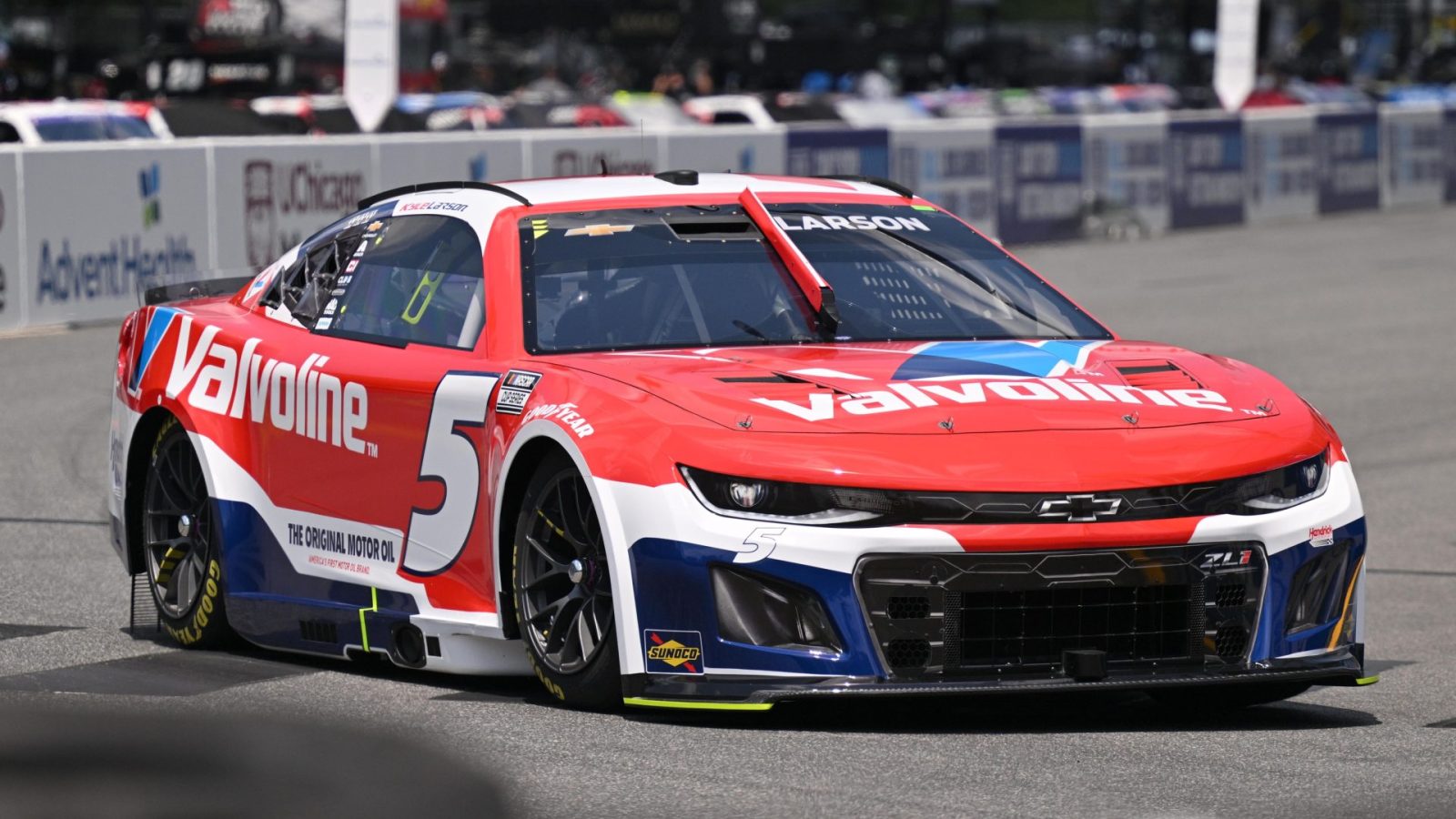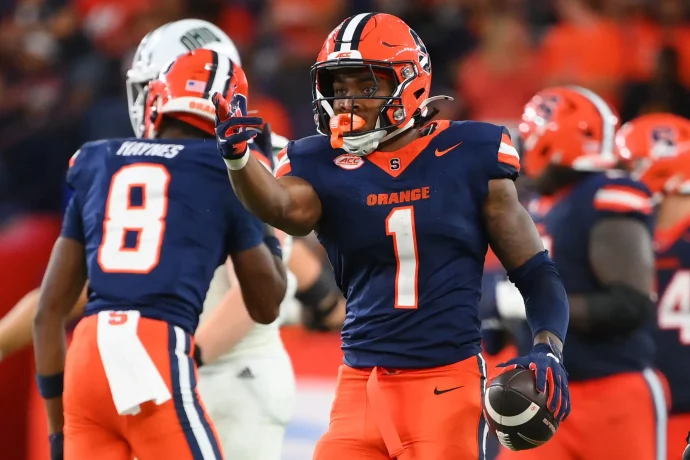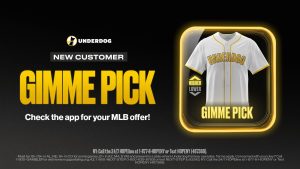Each week, the Props crew takes a look at the upcoming NASCAR slate from a props perspective. Further below, you’ll also find some key NASCAR DFS and betting advice that may help you become a sharper NASCAR player.
Which drivers should we be targeting with our NASCAR picks each week, and why? Find out below.
Best NASCAR Props – Top NASCAR Weekly Picks
Hunting for top Toyota/Save Mart 350 prop bets? Our Props team has locked in their favorite NASCAR prop picks for Sunday’s race.
Let’s break down the best value plays on the board ahead of race day at Sonoma Raceway.
Kyle Larson Props – Top 3 Finish
Winning the Toyota/Save Mart 350 at Sonoma Raceway demands a unique blend of technical prowess, strategic calculation, and adaptability to a heavily undulating, twist-heavy road course.
The 1.99‑mile circuit features 12 tight turns and roughly 160 feet of elevation change, weaving through the Sonoma hills and requiring drivers to master elevation shifts and corner-specific braking zones.
Success hinges on preserving rear grip through the off‑camber corners, managing tire degradation during long green‑flag stints, and executing flawless pit strategies—whether stretching fuel late or biting early for fresh tires.
Sonoma rewards precision over raw aggression: drivers must hit braking marks consistently, modulate throttle through narrow exits, and avoid mistakes that can cost seconds on the hill-track’s tight confines. In essence, victory comes to those who combine smooth, disciplined driving with strategic patience and the ability to adapt dynamically across stages on this demanding road-course gem.
Larson captured the checkered flag in last year’s Toyota/Save Mart 350, topping a 110-lap road-course battle. The Hendrick Motorsports driver earned his third victory of the 2024 season by executing a decisive late-race pass with eight laps remaining, showcasing his road-course prowess.
Michael McDowell grabbed a solid second-place finish, while Chris Buescher came home third. Chase Elliott and Ross Chastain rounded out the top five in a race dominated by Larson’s skillful navigation of the tight turns and elevation changes at Sonoma Raceway.
Shane van Gisbergen continued his dominance on Chicago’s challenging street circuit by taking the 2025 Grant Park 165 on Sunday. Starting from the pole, the Kiwi driver led every lap in the 75-lap event at the 2.2-mile Grant Park layout, ultimately holding off Ty Gibbs and Tyler Reddick to claim victory for Trackhouse Racing, marking his second win at this venue after triumphing in the 2023 edition.
His performance showcased masterful control through tight, concrete-lined streets and flawless execution amid early-race incidents. Denny Hamlin and Kyle Busch secured fourth and fifth places, respectively, rounding out a competitive top 5.
William Byron leads the Driver’s Standings with 632 points, with Elliott on 619 and Larson at 613.
Van Gisbergen is a +130 favorite to win the Toyota/Save Mart 350 this year. Larson is at +550, and Gibbs and McDowell are at +1100.
Larson possesses a rare combination of raw talent, elite car control, and adaptability that makes him a top-tier contender at technical road courses like Sonoma Raceway. A native of California, Larson has consistently excelled at Sonoma thanks to his deep familiarity with the track’s elevation changes, tight corners, and braking zones.
Larson’s dirt racing background has sharpened his throttle modulation and feel for grip, allowing him to navigate off-camber turns and manage tire wear with precision. With multiple road course victories under his belt—including a dominant win at the Toyota/Save Mart 350 last year—Larson has proven that he thrives under the intense physical and mental demands that Sonoma presents.
What separates Larson from most of the field is his ability to stay aggressive while remaining clean and composed over long green-flag runs. He’s capable of making decisive passes in the few overtaking zones Sonoma offers, and his chemistry with the No. 5 Hendrick Motorsports team ensures strong race setups and efficient pit strategies.
Larson also excels at managing track position and adjusting his approach in real time based on stage break dynamics and fuel windows. With his track record, skillset, and momentum, Larson is well-positioned for another top-three finish at Sonoma and remains a threat to contend for the win.
Pick: Kyle Larson Top 3 Finish
NASCAR Props Tips and Strategy
Betting on NASCAR has expanded far beyond picking a race winner. Prop bets — wagers on specific outcomes within a race — have become a favorite for serious bettors who want to dig deeper into the data and find more consistent edges.
Whether you’re betting on finishing positions, head-to-head matchups, stage winners, or manufacturer props, understanding the right stats and strategy can turn casual wagers into calculated plays.
Here’s a complete guide to improving as a NASCAR props bettor.
What Are NASCAR Prop Bets?
Prop bets in NASCAR focus on performance-based outcomes for drivers or manufacturers, rather than the overall winner. Common NASCAR prop markets include:
- Top 3 / Top 5 / Top 10 Finishes
- Head-to-Head Matchups
- Group Matchups (Speed Lanes)
- Stage Winners
- Winning Manufacturer
- Over/Under Finishing Position
- Race Specials (e.g. Most Laps Led, Number of Cautions)
Books offer different variations depending on the event’s size. Marquee races like the Daytona 500 typically offer a wider range of props.
Track-Specific Performance Is Key
Not all NASCAR tracks are created equal — and neither are drivers. Some racers consistently thrive on superspeedways, while others dominate road courses or short tracks.
Track types to know:
- Superspeedways: Daytona, Talladega (drafting, chaos-prone)
- Intermediate Ovals: Charlotte, Kansas (aerodynamic efficiency)
- Short Tracks: Bristol, Martinsville (braking, aggression)
- Road Courses: Circuit of The Americas, Sonoma (technical driving, pit precision)
When betting props, identify how each driver has historically performed on the track type in question. A driver who underperforms on short tracks isn’t a good Top 5 bet at Bristol, even if they’re elite elsewhere.
Practice and Qualifying Data Matter
Practice speeds and qualifying positions can be extremely predictive for props. If a driver is consistently fast in practice and earns a favorable qualifying spot, it’s a strong signal for props like:
- Top 10 finish
- Head-to-head matchups
- Stage winner (especially for Stage 1 or 2)
However, remember that some drivers prioritize race-day setup over qualifying speed. Know your team tendencies.
Manufacturer Props: Don’t Overlook the Car
In Cup Series races, three manufacturers compete: Chevrolet, Ford, and Toyota. Certain tracks favor specific makes based on aero packages and horsepower setups.
When betting winning manufacturer props:
- Look at which teams are driving each brand.
- Note recent manufacturer trends on similar tracks.
- Check qualifying balance — if 7 of the top 10 starters drive Chevrolets, there’s likely value.
Head-to-Head and Group Matchups: Margin of Error
These props are often where sharp bettors thrive.
Tips for success:
- Use average finish over the last 5-10 races on similar track types.
- Monitor qualifying — a poor start for one driver in the matchup often shifts value significantly.
- Watch for team dynamics: teammates may work together or avoid racing each other too hard, which can impact aggressive passes.
Group matchups (speed lanes) work similarly, but with three or more drivers. You’re picking the best finisher among the group.
Momentum and Form
Current form matters. Drivers on a run of Top 5s or clean races are more reliable bets to continue performing. A hot pit crew and consistent setup choices often carry from week to week.
For example, a driver who has rattled off three straight Top 10s on intermediate tracks is likely in rhythm — ideal for Top 10 props or group matchup wins.
Pit Crews, Team Strategy, and Reliability
Every second counts in NASCAR. Pit crew efficiency, clean stops, and smart crew chief decisions can decide head-to-head props and stage bets.
Consider:
- Average pit stop time (many teams post these stats weekly)
- Recent pit road mistakes (penalties, uncontrolled tires)
- Mechanical reliability — some teams suffer frequent DNFs
Drivers with poor pit crews are risky prop bets, especially when backing them in tight matchups or exact finish range props.
Caution Counts, Race Chaos, and Risk Tolerance
Some tracks are prone to mayhem. Superspeedways like Talladega or Daytona create chaos through pack racing and frequent crashes. This can ruin even the safest prop bets and boost longshots.
In chaotic races:
- Favor underdog group matchup winners
- Avoid aggressive Top 3 bets on inconsistent drivers
- Target head-to-head matchups where one driver has strong survival skills
In cleaner races (like Phoenix or Michigan), statistical averages hold up better, making Top 10 or Top 5 props more stable.
Weather, Track Conditions, and In-Race Adjustments
Rain delays, hot track temps, and rubber build-up can dramatically alter car behavior. Some drivers excel on slick tracks; others fade.
Keep an eye on:
- Temperature and humidity
- Rain in the forecast (shortened races impact prop payouts)
- In-race adjustments — watch how cars respond mid-race before live betting props
Pick Your Spots, Not Every Prop
The prop market rewards precision, not volume. You don’t need to bet every matchup or every Top 10 line.
Your best approach:
- Specialize in one or two markets (e.g., head-to-heads or manufacturer props)
- Track your bets and ROI per prop type
- Lean on a blend of tape, stats, and real-time information (practice speed, pit crew stats, team changes)
Over time, consistent attention to details like track type, form, and qualifying speed will separate you from the casual prop bettor. NASCAR props reward the disciplined and informed — so build your process and trust the data.







